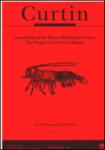Sustainability of the Western Rock Lobster Fishery: Past Progress and Future Challenges
| dc.contributor.author | Phillips, Bruce | |
| dc.contributor.author | Melville-Smith, R. | |
| dc.date.accessioned | 2017-01-30T11:10:31Z | |
| dc.date.available | 2017-01-30T11:10:31Z | |
| dc.date.created | 2008-11-12T23:21:27Z | |
| dc.date.issued | 2003 | |
| dc.identifier.citation | Phillips, Bruce and Melville-Smith, Roy. 2003. Sustainability of the Western Rock Lobster Fishery: Past Progress and Future Challenges. : Curtin University of Technology. | |
| dc.identifier.uri | http://hdl.handle.net/20.500.11937/9099 | |
| dc.description.abstract |
The Western Rock Lobster Fishery has 594 boats operating about 57,000 pots. Their average annual catch of 11,000 tonnes is valued at around US$150-300 million. In addition to the commercial catch, recreational fishers take about 600 tonnes a year. Sustainability in this fishery is maintained by analysis of a comprehensive fisheries database, some of which dates back to the 1960s (e.g. catch, effort, length-frequencies, fishery- ndependent breeding-stock surveys, puemlus settlement monitoring, recreational catch monitoring); an extensive set of management controls (including a limited fishing season and legal minimum and maximum sizes); and an effective compliance program. Effort in the fishery is controlled by input restrictions on the number of pots allowed and number of days fishing, which are implemented after considerable consultation with industry. The principal method of ensuring the sustainability of the fishery is by monitoring the size of the breeding stock, using data from both a commercial at-sea monitoring program and an annual fishery-independent breedingstock survey. When the breeding stock fell to low levels in the early 1990s, management initiatives succeeded in returning it to what are considered to be safe levels. Catches are currently high, but fishers have acquired sufficient scientific knowledge to understand that catches will fluctuate for environmental reasons and to take this into account in their fishing operations. Environmental effects have been shown to drive the level of settlement in a particular season. These settlement levels are in turn highly correlated with catches three to four years later, which provides a means of predicting future catches and managing the fishery accordingly. There are issues to be considered in assessing the sustainability of this fishery in the future. The fishery may be overly reliant on egg production from the Abrohos Islands; catching power of the commercial fleet is increasing due to improvements in gear and technological equipment; growth in catches made by the recreational sector are currently unconstrained; puemli may be harvested for aquaculture in the near future; and regulations protecting the female brood stock more than the male population could lead to reproductive issues. These potential threats are considered to be low, but will need to be monitored. The fishery was awarded Marine Stewardship Council certification in March 2000, the first in the world to receive this imprimatur. | |
| dc.title | Sustainability of the Western Rock Lobster Fishery: Past Progress and Future Challenges | |
| dc.type | Report | |
| curtin.note |
Originally published as: | |
| curtin.note |
Curtin University of Technology | |
| curtin.note |
Bulletin Number 25 | |
| curtin.note |
ISSN 0158 3301 | |
| curtin.identifier | EPR-286 | |
| curtin.accessStatus | Open access | |
| curtin.faculty | Division of Resources and Environment | |
| curtin.faculty | Muresk Institute | |
| curtin.faculty | Department of Environmental Biology |

